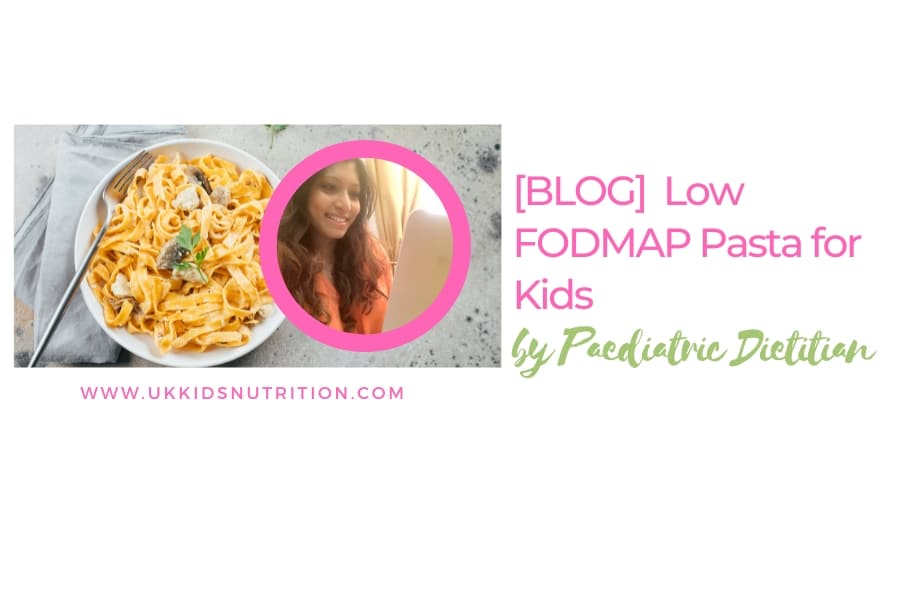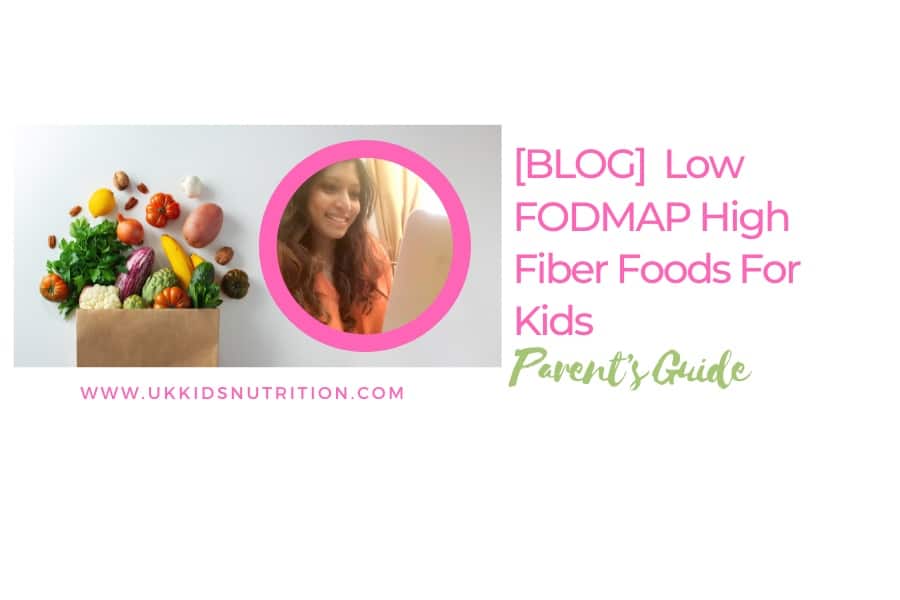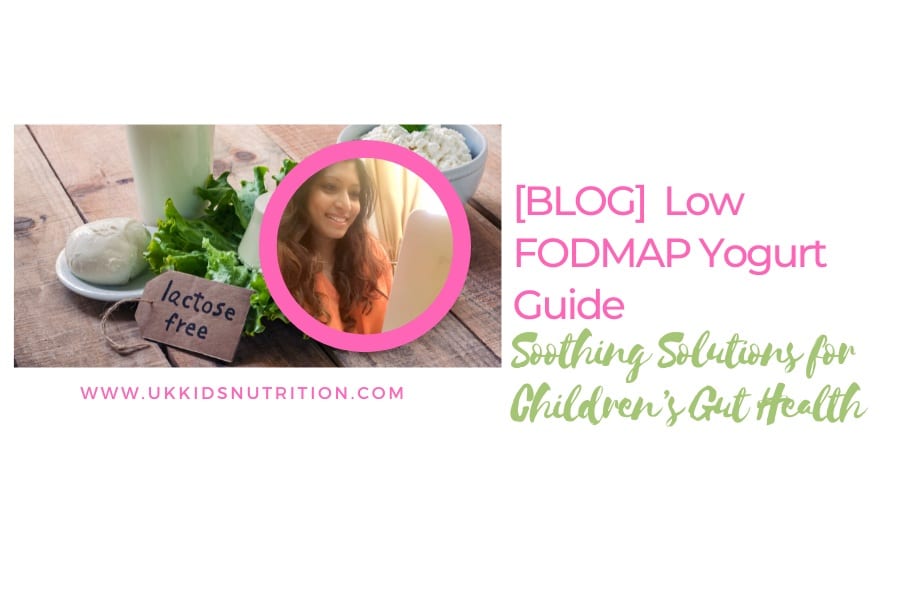Have you been searching for low FODMAP pasta?
Is your child also struggling with digestive issues like bloating and discomfort after meals?
If your child’s doctor suspects Irritable Bowel Syndrome (IBS), they may refer you to a paediatric dietitian.
After an assessment, the paediatric dietitian may recommend a short trial of the low FODMAPs diet for some children.
The diet trial can be a step in the right direction for many children.
It can help you pinpoint your child’s trigger for IBS symptoms like diarrhoea, tummy pain or constipation.
Pasta, a beloved staple in many children’s diets, is often restricted on the trial.
The good news is that it doesn’t have to disappear from the menu.
In this article, you’ll discover suitable pasta alternatives that can help to significantly ease your child’s tummy troubles.

Low FODMAP Pasta Options
In this guide, we’ll explore kid-friendly, low FODMAP pasta options that are delicious and easy to prepare.
Whether your child misses their mac ‘n’ cheese or craves a comforting bowl of spaghetti, I’ll share some fantastic low FODMAP recipes.
We’ll also cover tips to keep those pasta dishes fun—without the FODMAP fuss.
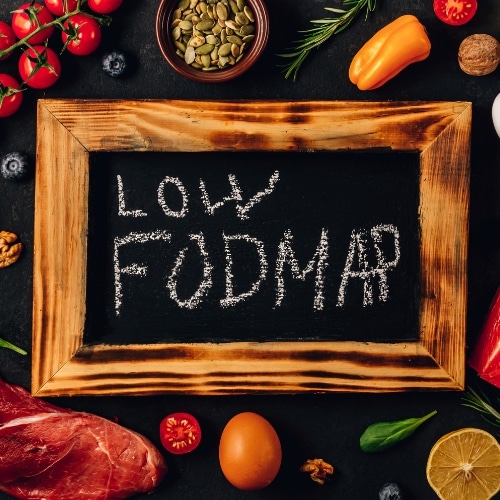
What FODMAPs Are in Wheat?
You might be wondering why regular pasta can sometimes cause tummy troubles for kids, especially those with sensitive guts or conditions like Irritable Bowel Syndrome (IBS).
Well, it’s often because of something called FODMAPs—short for Fermentable Oligosaccharides, Disaccharides, Monosaccharides, And Polyols. These are a bunch of carbohydrates that are tough to digest for some people.
In wheat, which is what most traditional pasta is made from, these tricky-to-digest carbs are mostly fructans.
Fructans are a type of oligosaccharide that can ferment in the gut when eaten in large amounts.
This fermentation isn’t as fun as it sounds—it can produce gas and lead to bloating, discomfort, and all sorts of bowel upsets, which isn’t what we want for our kids.
So, understanding that wheat is a big source of fructans helps us figure out why traditional pasta might be tricky for some children.
But don’t worry! There are plenty of delicious gluten-free pasta and low FODMAP pasta alternatives that won’t stir up the gut.
In the following sections, I’ll show you some tasty and kid-friendly pasta swaps and pasta recipes that keep meal times a breeze and bellies happy.

Watch Out for These FODMAPs in Pasta Dishes
While wheat-based pasta is a well-known fructan source, several other ingredients commonly found in pasta dishes can also contribute to digestive discomfort for children on a low FODMAP diet.
It’s important to be mindful of these ingredients when preparing meals, especially if your child is sensitive to specific FODMAPs. Let’s explore some common culprits:
- Garlic and Onion: Both garlic and onion are major sources of fructans and are often used to flavour many pasta sauces and dishes. These ingredients can be particularly challenging for those with IBS, as they can exacerbate symptoms like gas, diarrhoea and tummy pain.
- Lactose: Often found in dairy products used in creamier pasta dishes, lactose can be another trigger for diarrhoea. Ingredients like yoghurt, double cream and sour cream are popular in many traditional recipes but can be problematic for those with lactose intolerance.
Other helpful tips
Remember that not all children with IBS will react the same way to these FODMAPs.
Sensitivities vary widely, so it’s a good idea to monitor your child’s reactions to different foods using a symptom tracker.
You can use the tracker when discussing your child’s diet with a paediatric dietitian.
They can help you tailor a meal plan that avoids triggers and keeps your child’s digestive system happy.
For families looking to enjoy pasta dishes without worry, there are several FODMAP-friendly alternatives and adaptations you can make.
Opt for low-FODMAP pasta recipes that exclude high-FODMAP ingredients like garlic and onion.
When it make sense to do so, use lactose-free alternatives for dairy.
Do explore garlic-infused oils or asafoetida powder as flavour substitutes as these won’t aggravate sensitive tummies.
In the next section, we’ll dive into some delicious low-FODMAP pasta recipes that are perfect for children.
Choosing The Right Low FODMAP Pasta Varieties
Regular wheat pasta
Many parents are surprised to learn that a 1/2 cup serving of cooked wheat pasta is considered low in FODMAPs.
This portion size may satisfy younger children. If your child desires more, consider mixing in some lower FODMAP pasta alternatives to fill their plate without discomfort.
Quinoa & Quinoa Based Pasta
A wonderful low-FODMAP choice, quinoa is not only delicious but also high in protein—ideal for growing bodies. Quinoa-based pasta offers a similar texture and taste to traditional pasta and is a fantastic nutritional alternative.
Spelt Pasta
Like regular wheat pasta, spelt pasta is low FODMAP in servings of 1/2 cup. Keep in mind that mixing spelt with regular pasta could elevate the FODMAP levels, so it’s best to stick to the recommended serving size.
Red Lentil Pasta
Though incredibly nutritious and popular among parents of picky eaters due to its high iron content, red lentil pasta should also be limited to 1/2 cup servings to maintain its status as a low FODMAP food.
Chickpea Pasta
Chickpeas aren’t generally low in FODMAPs, but the good news is that up to a full cup of chickpea pasta is considered low in FODMAPs, making it a hearty and satisfying alternative for those on a restricted diet.
Corn & Rice Based Pasta
Monash University has analysed both corn and rice-based pastas and they have been confirmed to be low in FODMAPs.
Up to one cup per serving is deemed safe.
This makes them excellent substitutes if you’re looking for alternatives to traditional or chickpea pasta.
Celebrated for their research in the FODMAP field, Monash University’s findings are a trusted resource for determining safe foods for those following a low FODMAP diet.
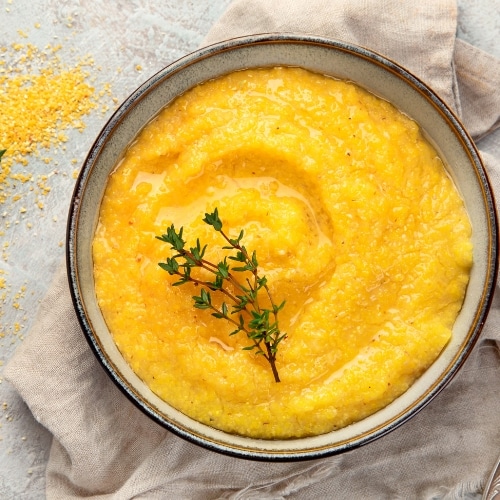
Other useful low-FODMAP grains and noodles
Polenta
As a grain, polenta is low in FODMAPs and can be a creative and tasty alternative to regular wheat pasta in many dishes.
Soba and Buckwheat Noodles
These noodles are a staple in Asian cuisine and offer a delicious, nutty flavour that complements a variety of dishes.
According to Monash University, soba noodles made from buckwheat are low in FODMAPs when kept to a serving size of ⅓ cup.
This makes them a suitable option for children starting a trial of a low FODMAP.
It can be a flavourful alternative to traditional pasta. These noodles can be dressed up with low FODMAP vegetables and a splash of tamari for an authentic taste experience.
Rice
All types of rice such as white, Basmati, and brown are low in FODMAPs and there are no cut-offs to portion sizes.
The only exception is red rice which is high in FODMAPs at 2 cups of cooked rice. Teenagers could eat up to this serving size but this is unlikely to be the case for younger children.
Another alternative to wheat-based noodles or pasta is rice noodles which are quick and easy to prepare.
Dry Pasta Brands I Love in the UK
When starting your child on a low FODMAP diet, finding the right pasta can be a key step for mealtime success.
Here’s a list of some popular low-FODMAP pasta brands available in the UK.
They are known for their quality and compatibility with a low FODMAP diet.
This list isn’t exhaustive, but it provides a good starting point for parents:
- Rummo Gluten Free Chickpea Pasta: This brand is renowned for its delicious chickpea-based pasta. It is low in FODMAPs, and rich in protein and fibre, making it a nutritious option for growing kids.
- Schar: Is an established leader in gluten-free products. Schar offers a variety of pasta shapes and types suitable for a low FODMAP diet. A good cupboard staple so that children don’t miss out on their favourite dishes.
- Freee Organic Gluten-Free Brown Rice Fusilli: This fussili is made from organic brown rice. It’s also a great alternative for children avoiding gluten and high FODMAP grains. It’s perfect for a variety of pasta dishes, from cold salads to warm, saucy meals.
- Sainsbury’s Deliciously Free From Pasta: Sainsbury’s own free from range offers a reliable and easily accessible gluten-free pasta option. Perfect for the low FODMAP diet and everyday meals.
- Barilla Gluten-Free Pasta: Barilla’s gluten-free range is crafted to provide the same al dente texture as traditional pasta. Their fusilli is versatile, making it an excellent choice for numerous pasta recipes that the whole family can enjoy.
- ASDA Free From Pasta Range: ASDA’s range of free-from products includes several low FODMAP pasta options that are free from wheat. They cater to various dietary needs without compromising on taste.
- Tesco Free From Pasta: Their range includes fusilli, macaroni and penne
These brands are readily available in many supermarkets across the UK, which makes it convenient for menu planning.
Specific Low FODMAP Pasta Sauces
When managing a low FODMAP diet, it’s important to have quick, convenient options available.
You’ll be pleased with quick recipes during busy days when you don’t have time to cook from scratch.
Thankfully, several brands offer ready-made pasta sauces specifically formulated to be low in FODMAPs.
Use them to prepare a quick meal without worrying about triggering symptoms.
- Fody Marinara Pasta Sauce: Fody is known for its dedication to producing delicious low-FODMAP foods. Their Marinara Pasta Sauce is a great option for a tasty pasta dish.
- Bays Kitchen Tomato & Basil Stir In Sauce: Another excellent choice for a quick and easy dinner. Just stir it into your favourite low-FODMAP pasta for a flavourful meal, that’s ready in minutes.
These sauces are convenient but also helps your child adhere to the low FODMAP guideline.
This helps make meal prep simpler and less stressful.

Tasty Low FODMAP Pasta Recipes for Kids
Let’s dive into some kid-friendly, low FODMAP pasta recipes that don’t skimp on flavour.
These recipes ensure your children can still enjoy their favourite pasta dishes while sticking to their dietary restrictions.
Simple Mac and cheese
This Best Ever Macaroni Cheese recipe by BBC Good Food is an ideal family recipe.
Try the following swaps to tweak the recipe so it can be used in a low FODMAP diet trial.
- Substitute wheat pasta for a gluten-free or lower FODMAP substitute from the list above
- Swap garlic for chopped spring onions
- Substitute cow’s milk with lactose-free milk or oat milk (and other milk alternatives)
- Use a gluten-free flour or cornflour
Rice Pasta with homemade low FODMAP tomato sauce.
This Instant Pot Low FODMAP Tomato-Basil Pasta by Fun Without FODMAPs looks great!
Alternatively, boil the rice pasta and serve it with homemade tomato sauce.
I love to use a good quality tin of chopped tomatoes for this purpose.
You can cook it with garlic-infused olive oil and fresh or dried herbs.
In this recipe, the green leafy part of the leeks is used as it is low in FODMAPs.
However, it is completely optional.
You can also serve broccoli or green beans on the side with this meal.
Rice Noodles with Prawns or Chicken
Stir-fried noodles with prawns or chicken are a regular in my home.
It’s quick and easy to prepare, after a busy day at work or with the children.
This Stir-fried Beef with Oyster Sauce & Rice Noodles by Monash University sounds delicious and easy to make.
If your child does not like beef you can swap the beef for chicken, fish or prawns.
For a vegetarian option, use peanuts or eggs (if your family include eggs) as part of a vegetarian diet.
You can also incorporate a small portion of tofu for additional protein.

Dining Out and School Lunches: Navigating Low FODMAP with Kids
Eating out in restaurants during the low FODMAP trial
Eating out as a family when you first start the elimination phase can be overwhelming.
However, it’s important to remember that many children don’t need a traditional ‘strict’ low FODMAP diet trial.
Your IBS-trained paediatric dietitian can guide you through a more gentle approach.
Paediatric dietitians will also check that your child’s diet remains balanced and not overly restrictive.
When eating out, you can opt for simple choices like plain gluten-free pasta or rice.
You can also pair these with IBS-friendly options like cheese, roasted chicken or fish prepared without sauce.
Don’t forget to check the ‘sides’ menu too.
You can order vegetables or other items that your dietitian has approved for inclusion during the trial.
However, if you’re dining out for a special occasion, it’s okay to let your child choose a meal they’ll enjoy.
Special occasions are about making memories, not just about strict diet adherence.
If your child does experience any symptoms afterwards, make a note of it in their symptom diary.
Pay close attention to symptoms like diarrhoea, gas or tummy pain.
This can help you and your dietitian understand and manage their responses better.
Remember, the Healthy Poop Essentials Bundle includes a poop and symptom tracker that can be incredibly helpful in these situations.
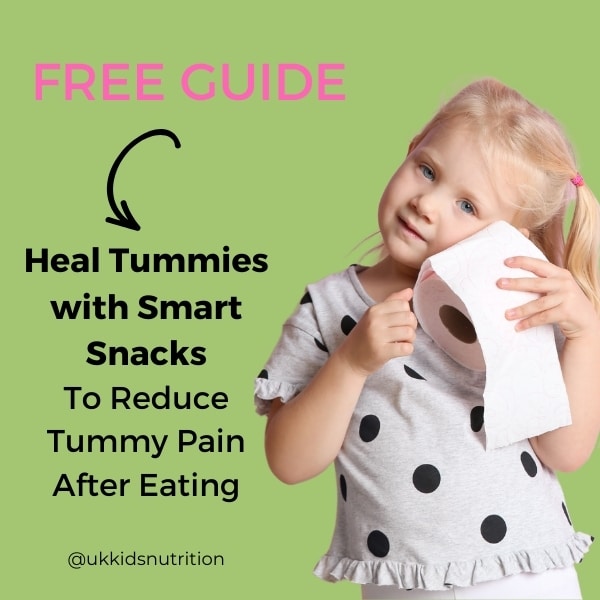
School lunches
Navigating school lunches during a low FODMAP diet trial can be challenging.
Unfortunately, most schools won’t be fully equipped to cater to such specific dietary needs.
Packing lunches from your home is often best to ensure your child’s meals are safe and enjoyable.
A simple and reliable option is to prepare sandwiches using low-FODMAP bread.
See our article “Does Bread Cause Bloating?” for tips on choosing the right bread). Including a piece of suitable fruit can also add a refreshing and nutritious touch to the meal.
As you explore more options, you might discover a type of pasta that your child enjoys. Cold pasta salads can be a delightful and filling choice for school lunches.
If your child prefers warm pasta, a thermos-type container can keep it heated until lunchtime.
Just be mindful that some gluten-free pastas may not hold up well over time—they can become mushy or disintegrate.
It’s worth doing a few test runs at home.
This will help you find a brand that remains appetising even after a few hours in a lunchbox.
When you prepare your child’s lunches yourself, you will have complete control over the ingredients.
This makes a big difference to manage their symptoms and keep their bellies happy throughout their school day.
Bottomline
Trials of the low FODMAP diet can be daunting. These pasta swaps ensure your child won’t miss their favourite meals. Remember, up to ½ cup of cooked wheat pasta still fits the low FODMAP criteria. You don’t need to cut out regular pasta entirely.
Balancing nutrition with the enjoyment of food is crucial for managing a child’s diet for conditions like IBS. This balance ensures they don’t feel left out, especially during meals with friends or family.
If you’re struggling with this balance or need specific help for constipation or diarrhoea, consider joining the Happy Belly Club.
Our program offers tailored advice and support to make dietary management straightforward and stress-free.
Learn more about how the Happy Belly Club here.
Bahee Van de Bor is a registered paediatric dietitian, specialising in gut health, food intolerance and fussy eating.

Let Me Help
If you’re seeking more personalised guidance or in-depth information, consider exploring my specialized programs and resources:
- Online Course: “Happy Belly Blueprint” – This comprehensive course offers detailed strategies and insights to enhance gut health and solve tummy troubles in children.
- 1-2-1 Programme: “Happy Belly Club” – Tailored for individual needs, this program provides one-on-one support to master the challenges of IBS in kids.
- FREE Guide: Don’t miss out on the valuable insights in “Heal Tummies With Smart Snacks”. Download this free guide to start making positive changes today.
- CHAT With Bahee: Book a free initial consultation to discuss the Happy Belly Club.
Each of these resources is designed to empower you with the knowledge you need to support your child’s gut health.
